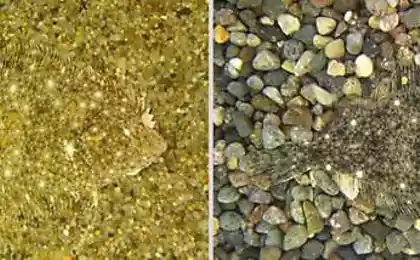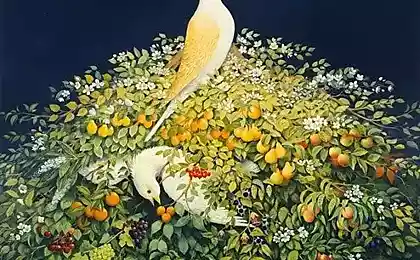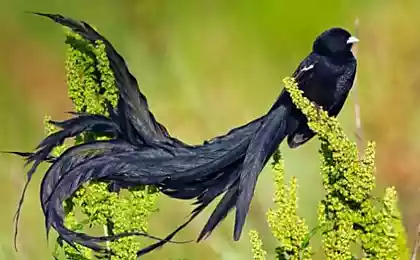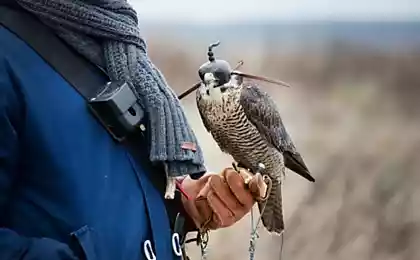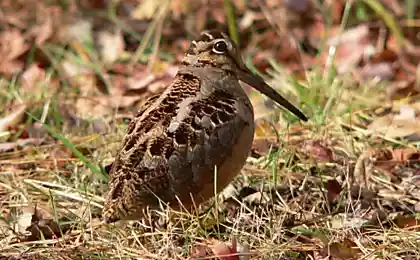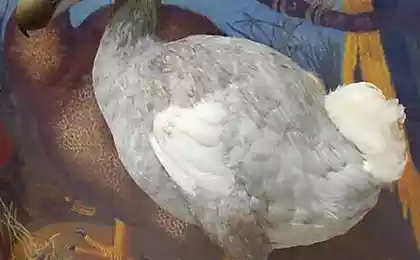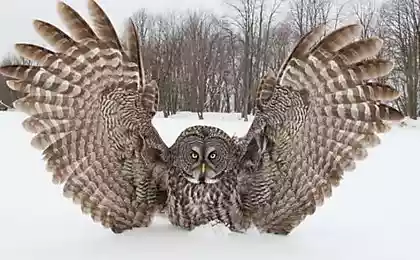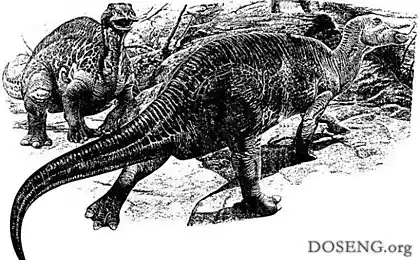1415
Bird pretending to branch
In tropical parts of Central and South America, from Mexico to Brazil and the Antilles can find a bird that knows how to lie well, very convincing. Its name Giant nightjar. Grayish-brown plumage of these birds are perfectly masks them against tree bark. I suggest you learn some interesting information about this amazing bird.
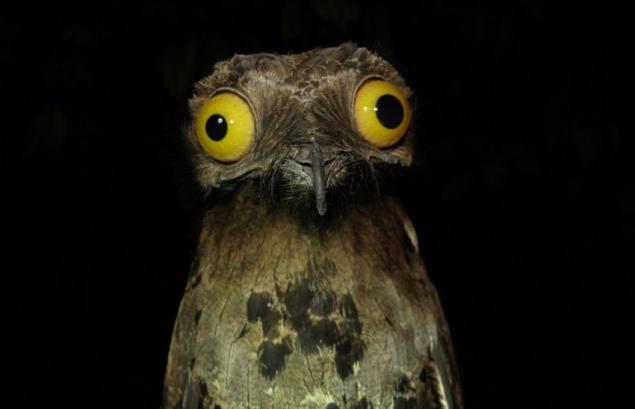

GREY giant nightjar (Nyctibius griseus) - the most common bird family potoo.
Grey Poteau inhabits the open spaces of southern Mexico to Argentina and Paraguay, and is also found in some Antilles (except Cuba) and the island of Trinidad.
Common potoo - large bird. The length of its body is about 35 cm. The plumage is dominated by gray color with black spots and stripes. The tail is long, very short legs.
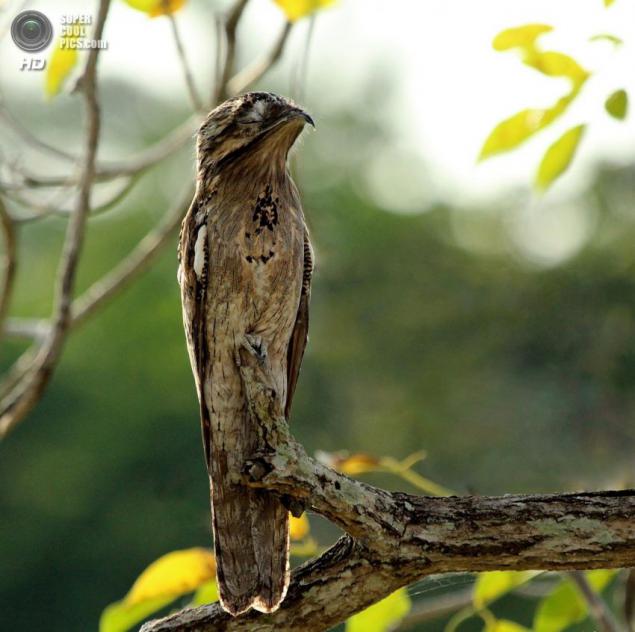
By nesting gray nightjar in different parts of the range starts at different times: in April - to Surinam in July - Trinidad and bird nests in Brazil in November - December. Its unique white markings with the bird lays eggs usually in a small depression at the top of the broken tree trunk. The nest can be located very close to the ground, sometimes to a height of 15 m.
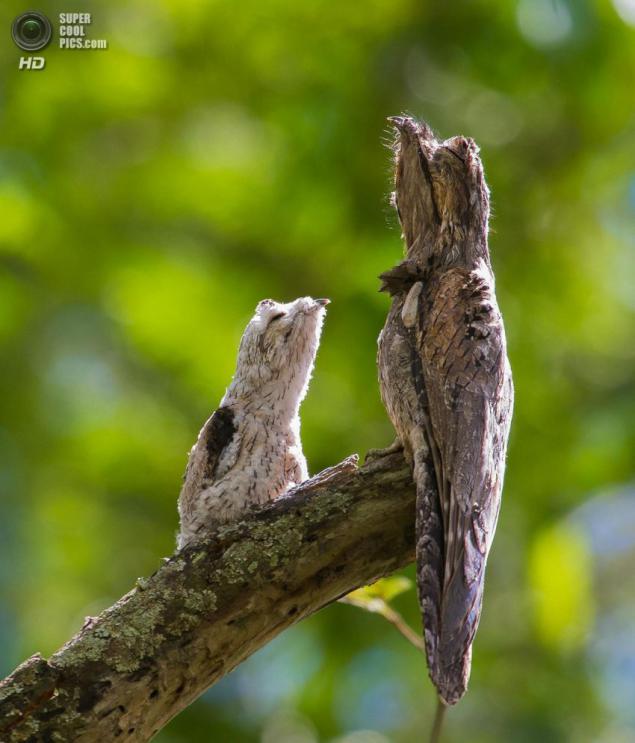
Unlike other birds, gray Poteau incubates the egg while in an upright position, covering her single egg feathers fluff chest. The duration of incubation is about a month. The chick is born covered with white down and long, nearly two months, it is in the nest. On average, from the beginning of incubation eggs and before departure chick passes, usually at least 70 days.
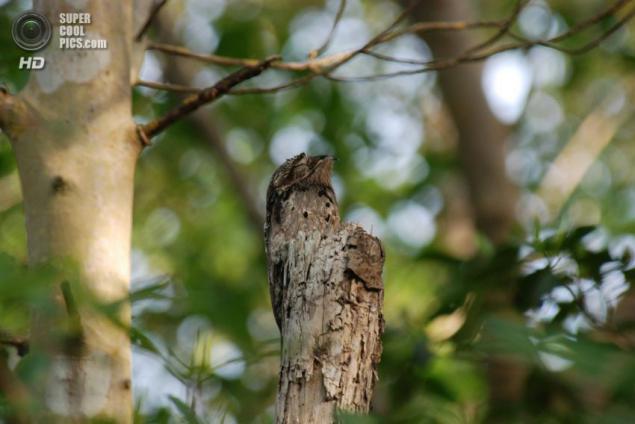
Like all other types of potoo gray Poto is a single solitary and nocturnal. It is not easy to observe in the daytime, when he sits motionless, resembling a twig of the tree, which helps their protective camouflage plumage. When the bird is quiet, her head stretched out and closed the beak facing forward; but if it is disturbed or saw somewhere the enemy, then all at once her body becomes tense and slightly leans forward, beak slightly opened and pulled straight up. Grey Poteau so confident in their invisibility, it is possible to approach him cautiously vprity, sometimes even touch the stood bird.
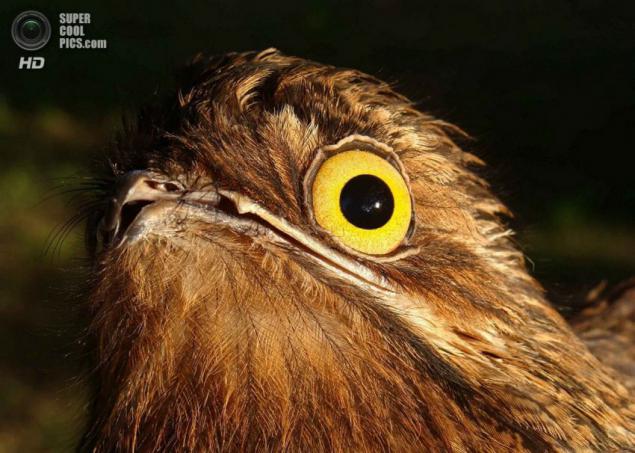
It feeds on the gray nightjar mainly insects, which it catches at night in the manner of flycatchers, ie while sitting quietly on a branch serving, then he takes off for prey, and again returned to his observation post. The basis of his diet are beetles, butterflies, Hymenoptera, Orthoptera and other invertebrates. Especially active in the gray nightjar moonlit nights when hunting helps the moonlight. Common potoo from time to time at night produces a kind of jerky song, vaguely reminiscent of barking.
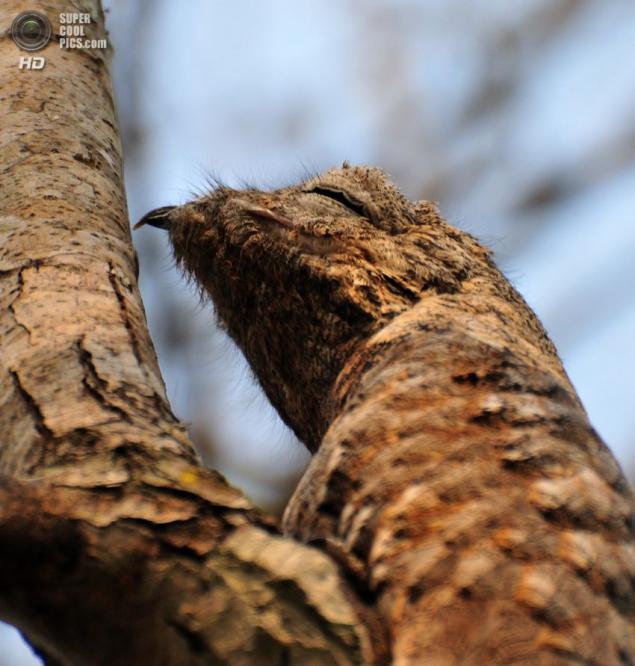
It is not easy to notice it during the day, when he sits motionless, resembling a twig of the tree. When the bird is quiet, her head stretched out and closed the beak facing forward; but if it is disturbed, then her whole body tense and slightly leaned forward, beak slightly open and pointing straight up. You can gently coming, sometimes even touch the bird. Gray nightjar eating insects, which it catches at night in the manner of flycatchers, ie while sitting quietly on a branch serving, then he takes off for prey, and again returned to his observation post. Its main food - beetles, Hymenoptera, Orthoptera, and so on. N. Especially active gray nightjar on moonlit nights. Find out about his presence can sometimes his peculiar jerky "barking».
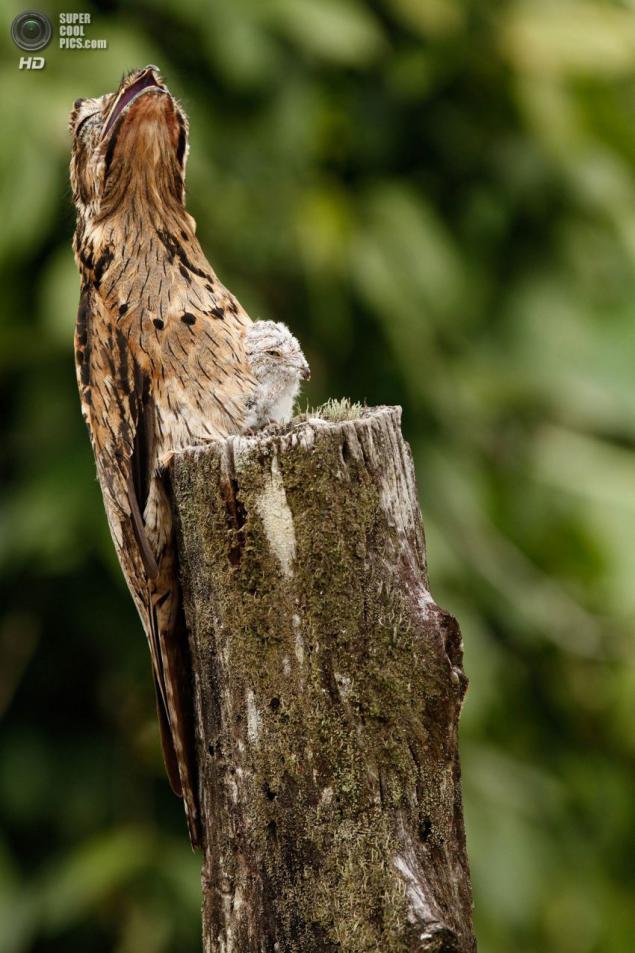
In general, a large group of birds nightjars, widespread mainly in tropical and subtropical areas of the globe and nocturnal. The size is relatively small, most of the species has a weight of about 100 g, and only the largest members of the order - oilbirds - reach the size of a rook and weigh up to 400 g colored males and females equally, and the painting Nighthawks relatively monotonous and largely resembles the color of bark of various trees . One of the most characteristic features - short and very wide beak with schetinkoobraznymi whiskers cut in the corners of the mouth - adaptation to the production of insects at night in the summer. With nocturnal linked and large sizes are very sensitive eyes and soft, loose feathers, like owls. All nightjars - excellent flyers. Their wings long and pointed, with 10, at least 11 flight feathers. The tail is also long, with 6 pairs of tail feathers. In flight kozodoi somewhat resemble hawks and swallows some.
Legs short, and on the ground, these birds move mostly slow, awkward leaps. Some nightjars (owl and potoo) in nadhvostya have pudretki producing powdery fluff. Some species living in deep caves, are capable of echolocation. A number of species inhabiting the temperate areas are found to fall into a stupor with a decrease in body temperature, and even to sleep. Distribution of most nightjars limited to the tropics and subtropics, but some species in the northern hemisphere penetrate too far to the north. Representatives of the order spread to every continent except Antarctica. None of New Zealand, but recently there has been found a fossil owl nightjar, featuring a very large size, who lived there in the Miocene.

Nighthawks - monogamous birds. To begin breeding at the end of the first year of life. Most species do not nest, the female lays 1-4 eggs that are usually white in color, directly on the ground or at the bottom of the hollow. At hatching, both parents are involved. Chicks hatch already sighted, covered with thick short down (except oilbirds). However, unlike precocial birds, nightjars feed their chicks, and the chicks when feeding cover its wide beak bird feeding beak tip. Nightjars squad is divided into 2 suborder. A total of 23 kinds of detachment with 93 species. In Russia, there are only three species of the genus Caprimulgus.
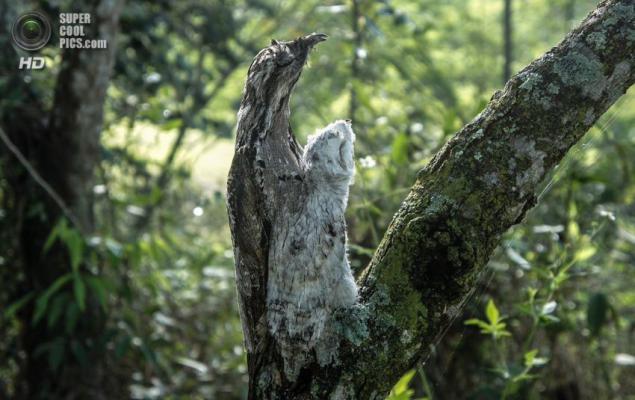
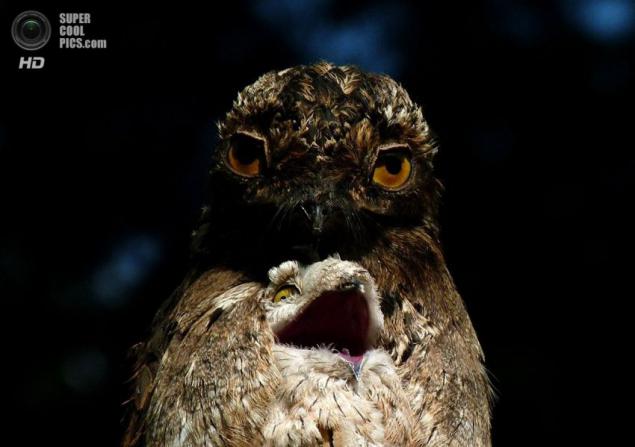
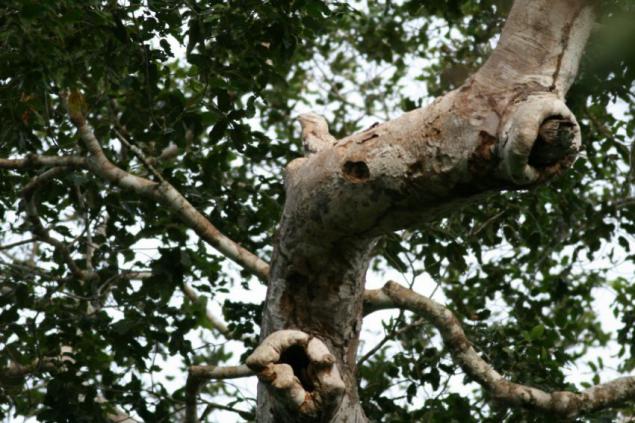
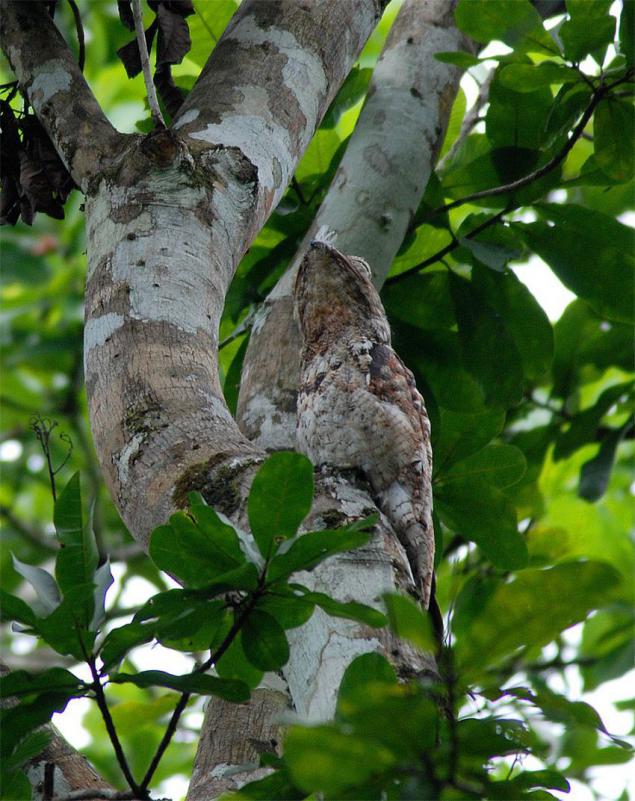
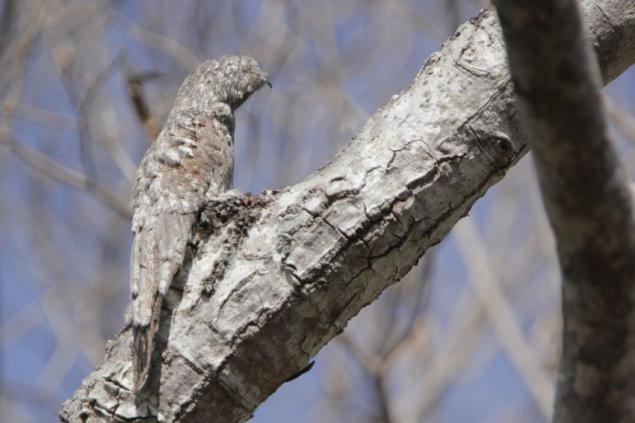
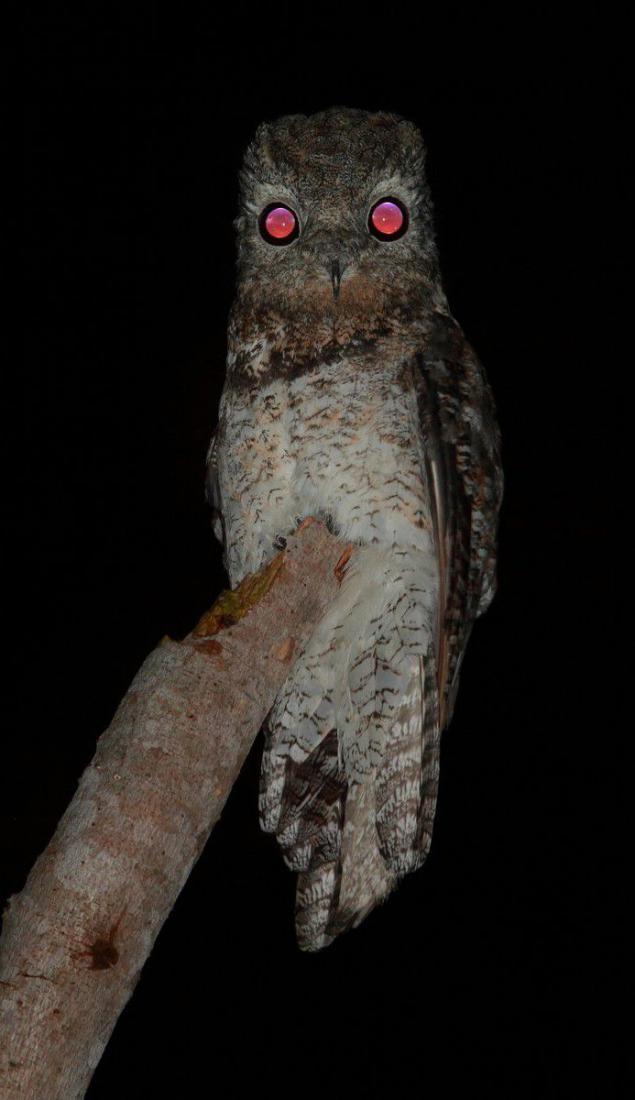




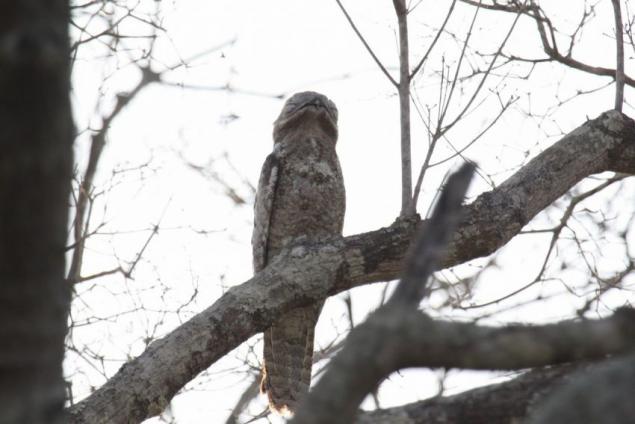

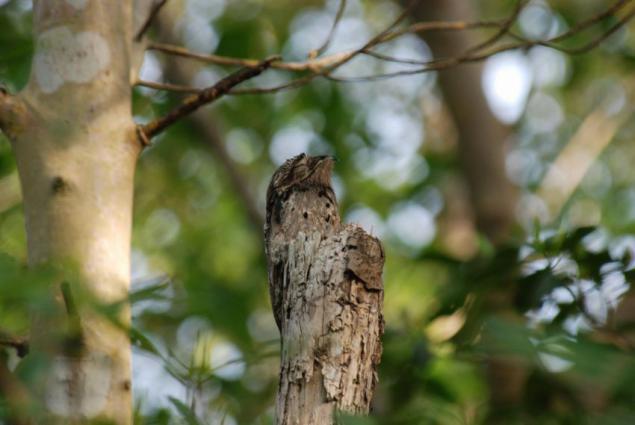
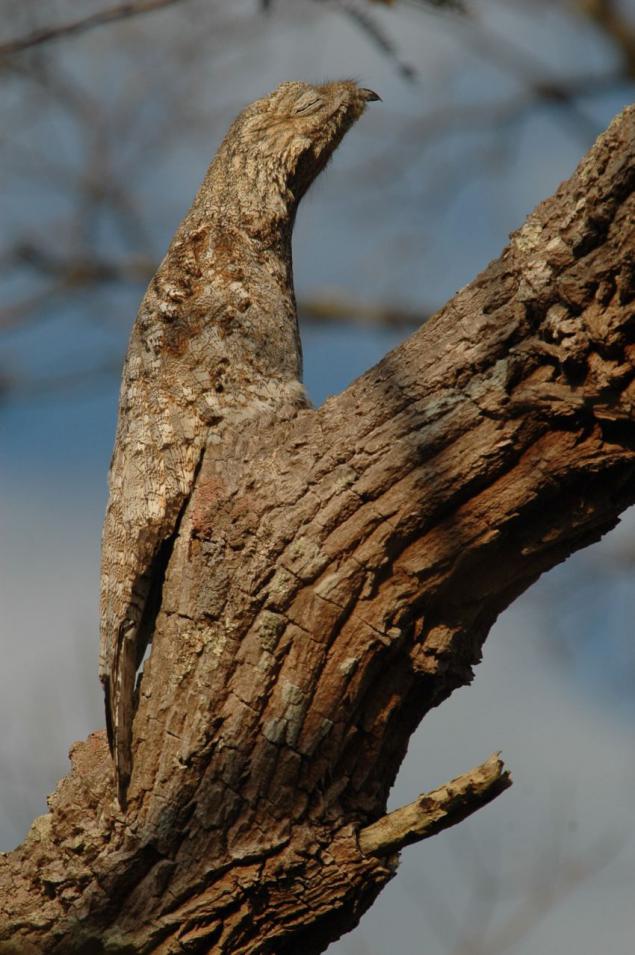

--img25--
Source: masterok.livejournal.com


GREY giant nightjar (Nyctibius griseus) - the most common bird family potoo.
Grey Poteau inhabits the open spaces of southern Mexico to Argentina and Paraguay, and is also found in some Antilles (except Cuba) and the island of Trinidad.
Common potoo - large bird. The length of its body is about 35 cm. The plumage is dominated by gray color with black spots and stripes. The tail is long, very short legs.

By nesting gray nightjar in different parts of the range starts at different times: in April - to Surinam in July - Trinidad and bird nests in Brazil in November - December. Its unique white markings with the bird lays eggs usually in a small depression at the top of the broken tree trunk. The nest can be located very close to the ground, sometimes to a height of 15 m.

Unlike other birds, gray Poteau incubates the egg while in an upright position, covering her single egg feathers fluff chest. The duration of incubation is about a month. The chick is born covered with white down and long, nearly two months, it is in the nest. On average, from the beginning of incubation eggs and before departure chick passes, usually at least 70 days.

Like all other types of potoo gray Poto is a single solitary and nocturnal. It is not easy to observe in the daytime, when he sits motionless, resembling a twig of the tree, which helps their protective camouflage plumage. When the bird is quiet, her head stretched out and closed the beak facing forward; but if it is disturbed or saw somewhere the enemy, then all at once her body becomes tense and slightly leans forward, beak slightly opened and pulled straight up. Grey Poteau so confident in their invisibility, it is possible to approach him cautiously vprity, sometimes even touch the stood bird.

It feeds on the gray nightjar mainly insects, which it catches at night in the manner of flycatchers, ie while sitting quietly on a branch serving, then he takes off for prey, and again returned to his observation post. The basis of his diet are beetles, butterflies, Hymenoptera, Orthoptera and other invertebrates. Especially active in the gray nightjar moonlit nights when hunting helps the moonlight. Common potoo from time to time at night produces a kind of jerky song, vaguely reminiscent of barking.

It is not easy to notice it during the day, when he sits motionless, resembling a twig of the tree. When the bird is quiet, her head stretched out and closed the beak facing forward; but if it is disturbed, then her whole body tense and slightly leaned forward, beak slightly open and pointing straight up. You can gently coming, sometimes even touch the bird. Gray nightjar eating insects, which it catches at night in the manner of flycatchers, ie while sitting quietly on a branch serving, then he takes off for prey, and again returned to his observation post. Its main food - beetles, Hymenoptera, Orthoptera, and so on. N. Especially active gray nightjar on moonlit nights. Find out about his presence can sometimes his peculiar jerky "barking».

In general, a large group of birds nightjars, widespread mainly in tropical and subtropical areas of the globe and nocturnal. The size is relatively small, most of the species has a weight of about 100 g, and only the largest members of the order - oilbirds - reach the size of a rook and weigh up to 400 g colored males and females equally, and the painting Nighthawks relatively monotonous and largely resembles the color of bark of various trees . One of the most characteristic features - short and very wide beak with schetinkoobraznymi whiskers cut in the corners of the mouth - adaptation to the production of insects at night in the summer. With nocturnal linked and large sizes are very sensitive eyes and soft, loose feathers, like owls. All nightjars - excellent flyers. Their wings long and pointed, with 10, at least 11 flight feathers. The tail is also long, with 6 pairs of tail feathers. In flight kozodoi somewhat resemble hawks and swallows some.
Legs short, and on the ground, these birds move mostly slow, awkward leaps. Some nightjars (owl and potoo) in nadhvostya have pudretki producing powdery fluff. Some species living in deep caves, are capable of echolocation. A number of species inhabiting the temperate areas are found to fall into a stupor with a decrease in body temperature, and even to sleep. Distribution of most nightjars limited to the tropics and subtropics, but some species in the northern hemisphere penetrate too far to the north. Representatives of the order spread to every continent except Antarctica. None of New Zealand, but recently there has been found a fossil owl nightjar, featuring a very large size, who lived there in the Miocene.

Nighthawks - monogamous birds. To begin breeding at the end of the first year of life. Most species do not nest, the female lays 1-4 eggs that are usually white in color, directly on the ground or at the bottom of the hollow. At hatching, both parents are involved. Chicks hatch already sighted, covered with thick short down (except oilbirds). However, unlike precocial birds, nightjars feed their chicks, and the chicks when feeding cover its wide beak bird feeding beak tip. Nightjars squad is divided into 2 suborder. A total of 23 kinds of detachment with 93 species. In Russia, there are only three species of the genus Caprimulgus.















--img25--
Source: masterok.livejournal.com
